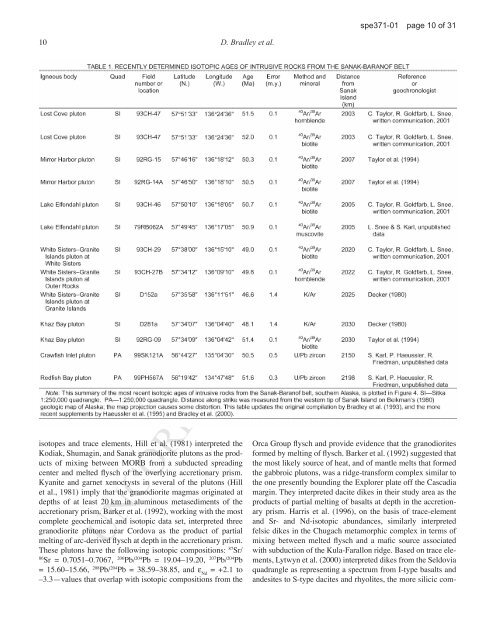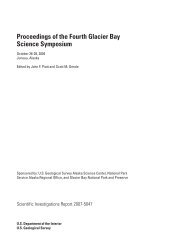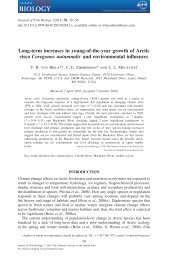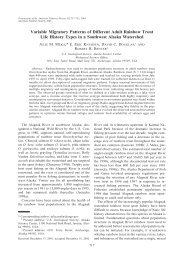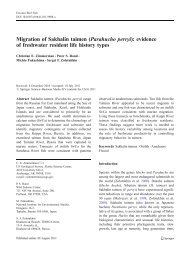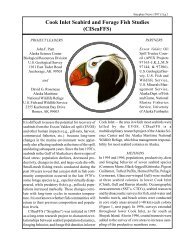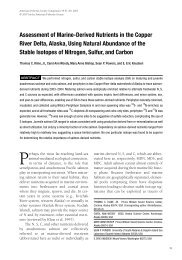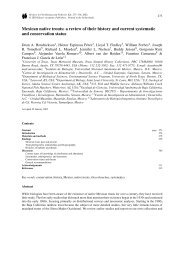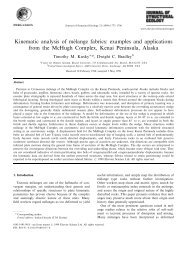UNCORRECTED PAGE PROOFS - USGS Alaska Science Center
UNCORRECTED PAGE PROOFS - USGS Alaska Science Center
UNCORRECTED PAGE PROOFS - USGS Alaska Science Center
Create successful ePaper yourself
Turn your PDF publications into a flip-book with our unique Google optimized e-Paper software.
spe371-01 page 10 of 31<br />
10 D. Bradley et al.<br />
isotopes and trace elements, Hill et al. (1981) interpreted the<br />
Kodiak, Shumagin, and Sanak granodiorite plutons as the products<br />
of mixing between MORB from a subducted spreading<br />
center and melted ßysch of the overlying accretionary prism.<br />
Kyanite and garnet xenocrysts in several of the plutons (Hill<br />
et al., 1981) imply that the granodiorite magmas originated at<br />
depths of at least 20 km in aluminous metasediments of the<br />
accretionary prism. Barker et al. (1992), working with the most<br />
complete geochemical and isotopic data set, interpreted three<br />
granodiorite plutons near Cordova as the product of partial<br />
melting of arc-derived ßysch at depth in the accretionary prism.<br />
These plutons have the following isotopic compositions: 87 Sr/<br />
86<br />
Sr = 0.7051–0.7067, 206 Pb/ 204 Pb = 19.04–19.20, 207 Pb/ 204 Pb<br />
= 15.60–15.66, 208 Pb/ 204 Pb = 38.59–38.85, and ε Nd<br />
= +2.1 to<br />
–3.3—values that overlap with isotopic compositions from the<br />
Orca Group ßysch and provide evidence that the granodiorites<br />
formed by melting of ßysch. Barker et al. (1992) suggested that<br />
the most likely source of heat, and of mantle melts that formed<br />
the gabbroic plutons, was a ridge-transform complex similar to<br />
the one presently bounding the Explorer plate off the Cascadia<br />
margin. They interpreted dacite dikes in their study area as the<br />
products of partial melting of basalts at depth in the accretionary<br />
prism. Harris et al. (1996), on the basis of trace-element<br />
and Sr- and Nd-isotopic abundances, similarly interpreted<br />
felsic dikes in the Chugach metamorphic complex in terms of<br />
mixing between melted ßysch and a maÞc source associated<br />
with subduction of the Kula-Farallon ridge. Based on trace elements,<br />
Lytwyn et al. (2000) interpreted dikes from the Seldovia<br />
quadrangle as representing a spectrum from I-type basalts and<br />
andesites to S-type dacites and rhyolites, the more silicic com-<br />
<strong>UNCORRECTED</strong> <strong>PAGE</strong> <strong>PROOFS</strong>


